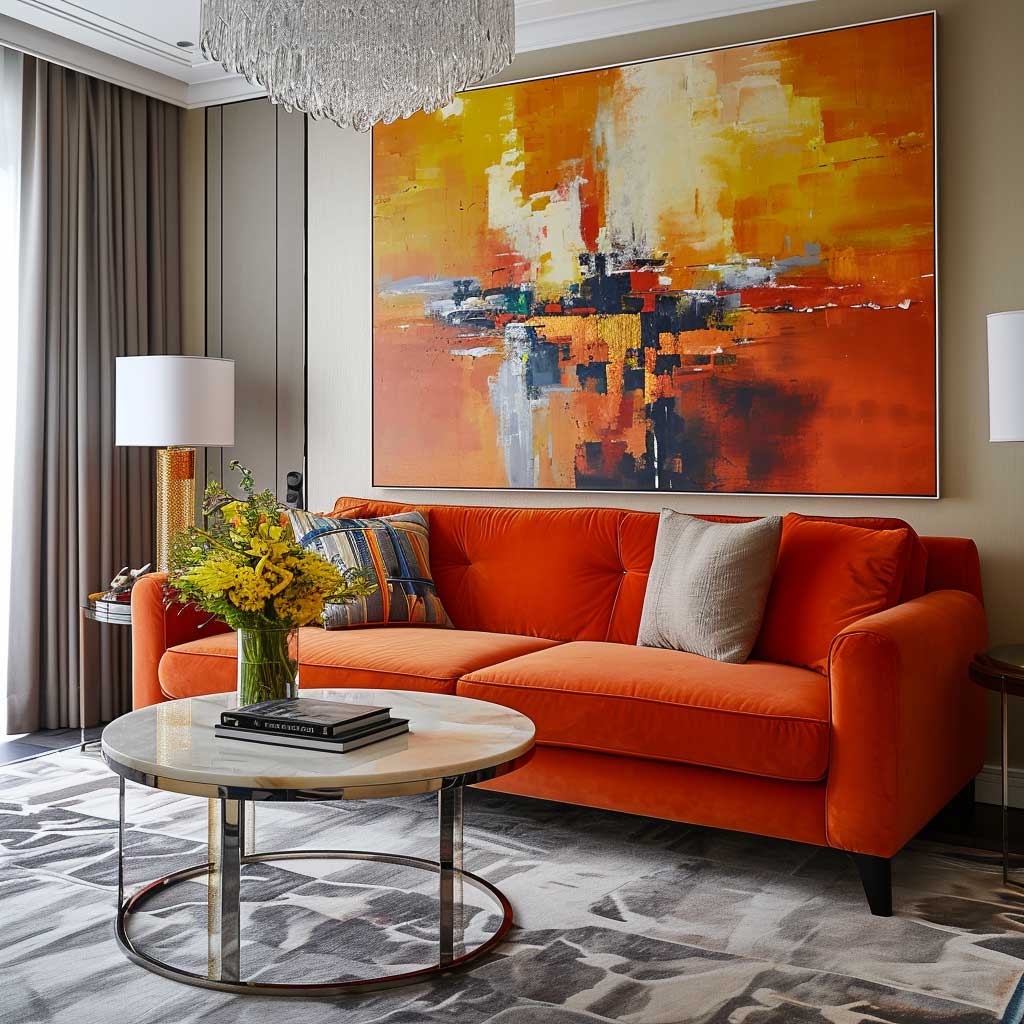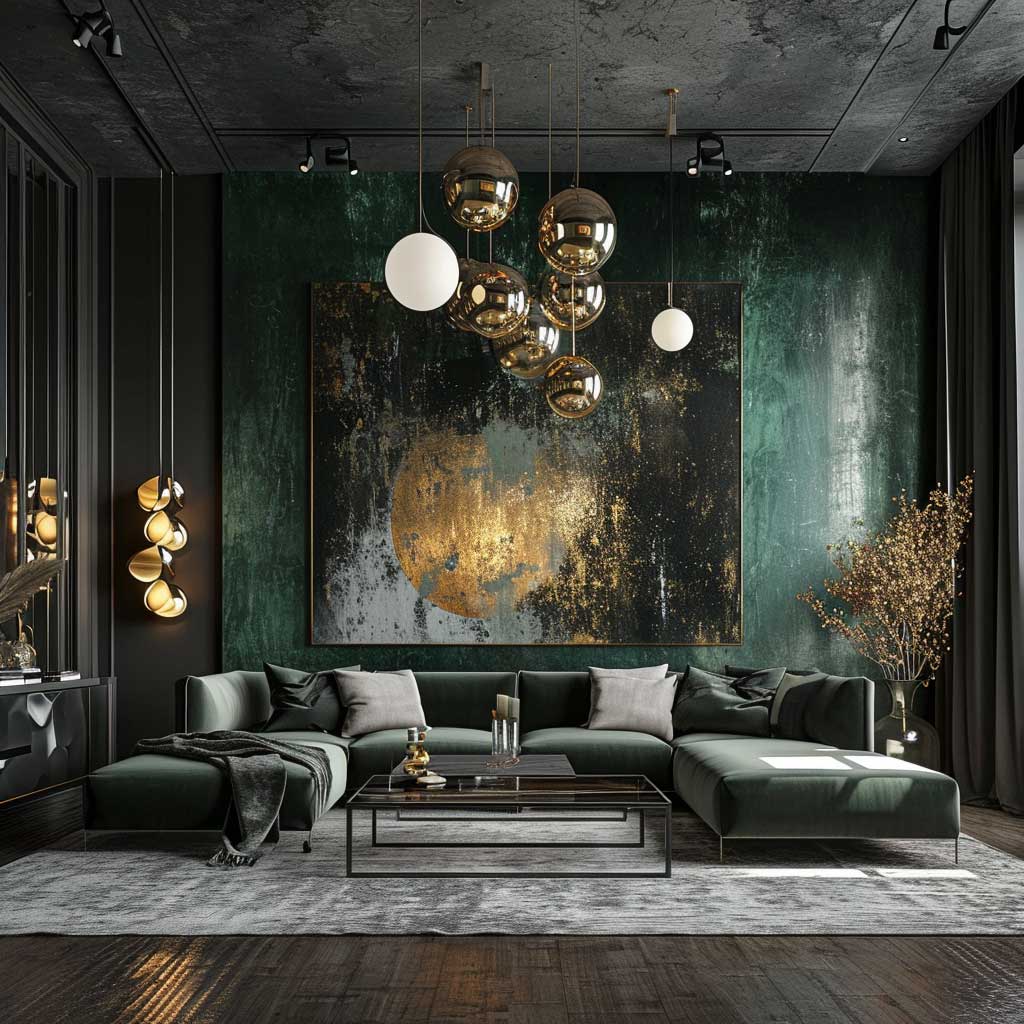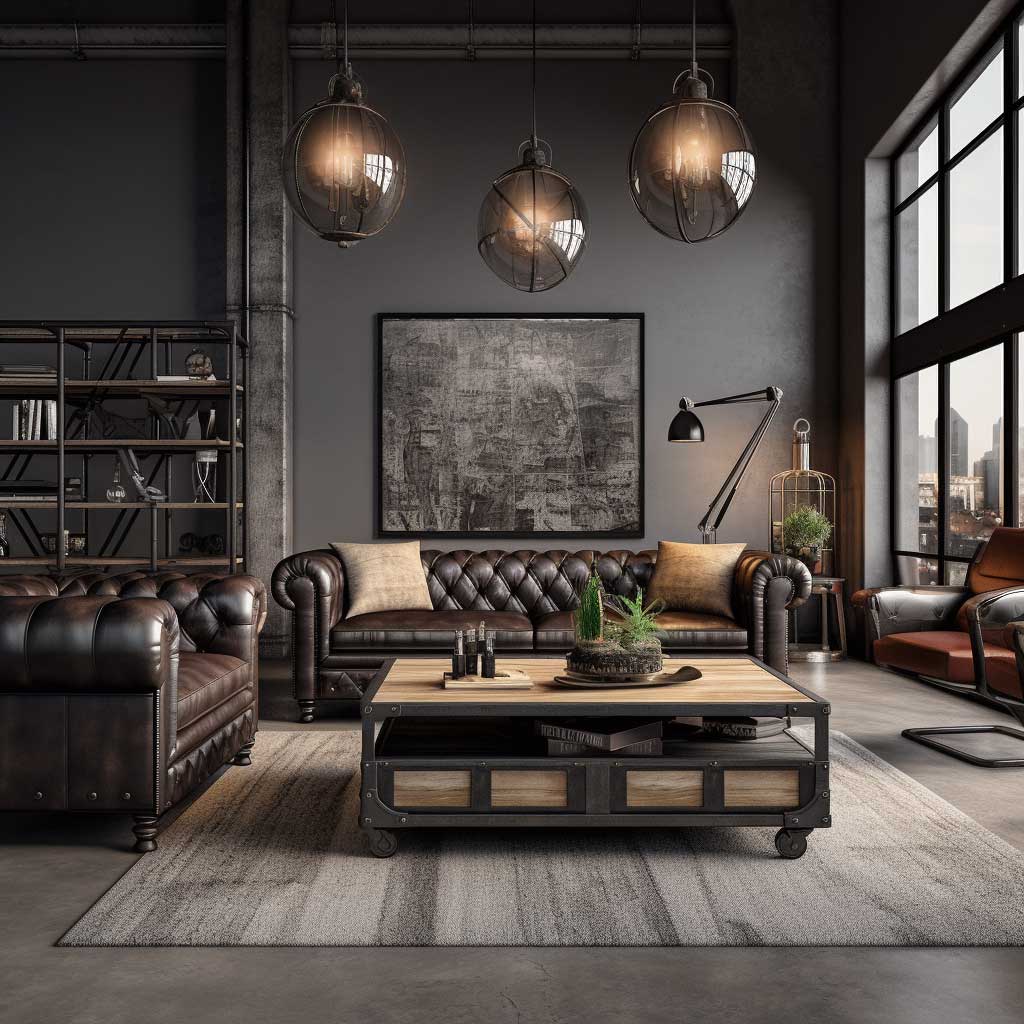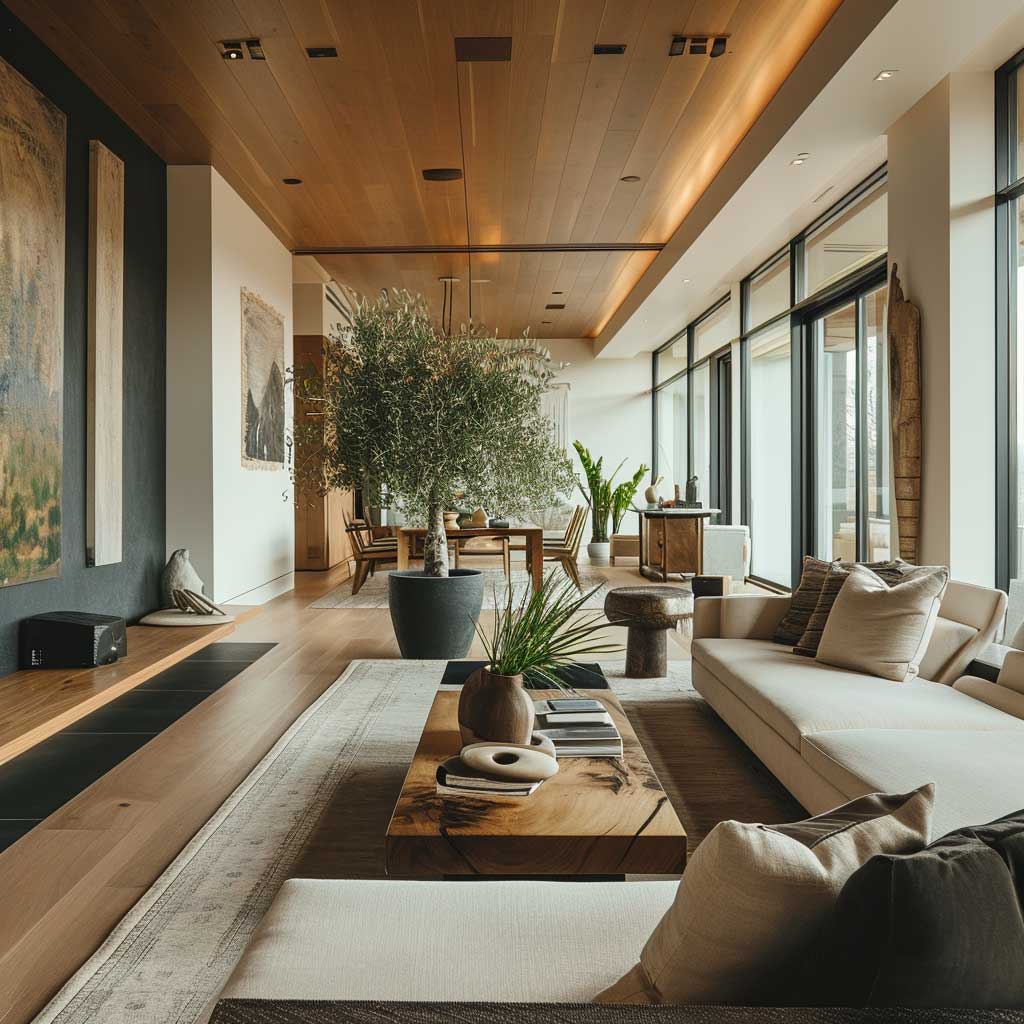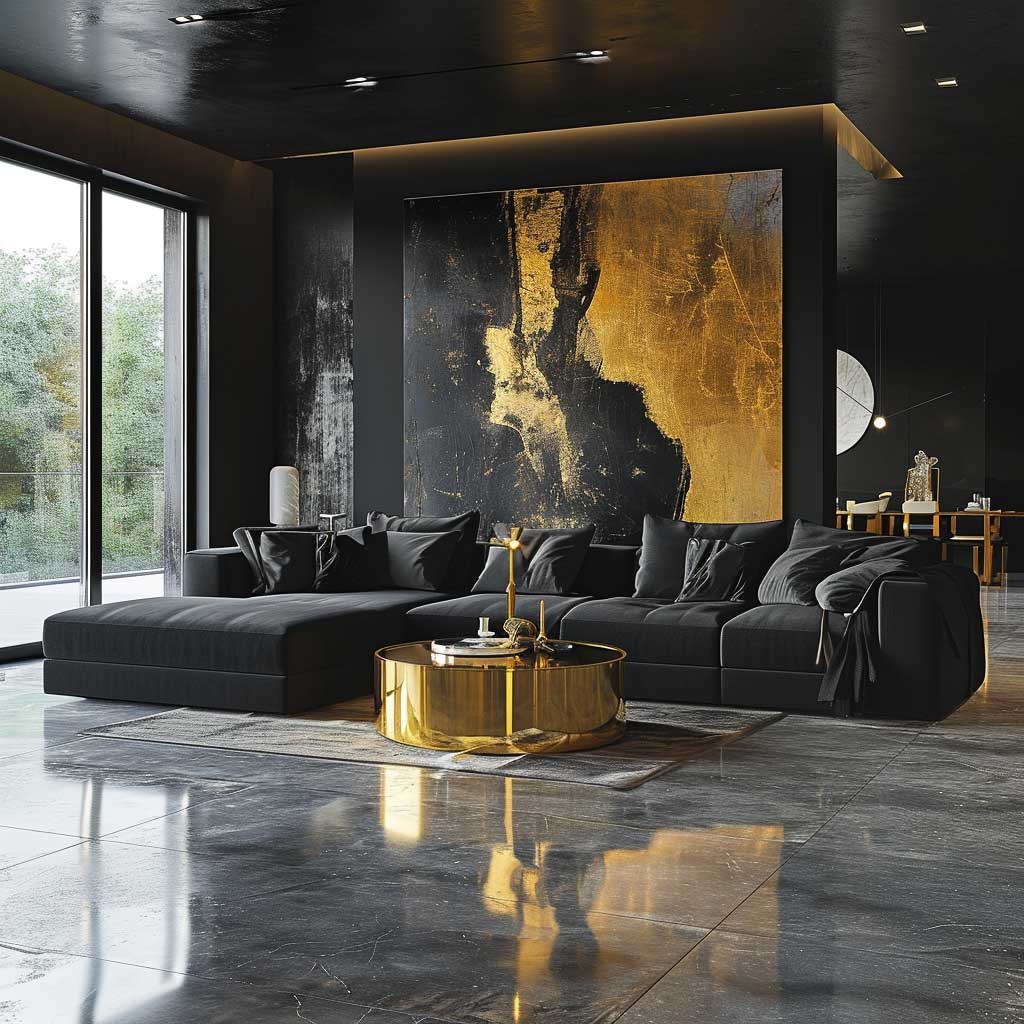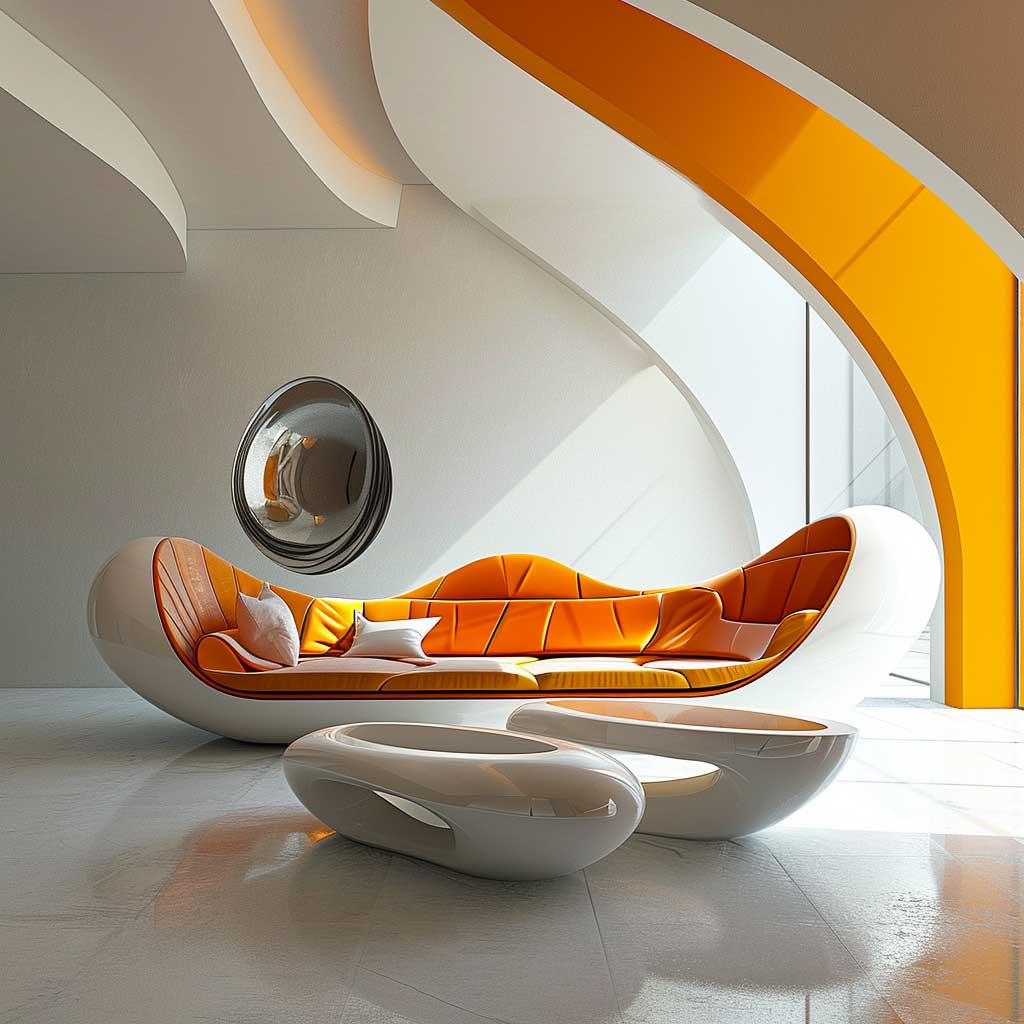Dive into the world of vibrant maximalist living room inspirations and discover how to bring a dynamic burst of energy and personality to your home. Maximalism, with its emphasis on bold colors, eclectic patterns, and rich textures, offers a unique way to express your style and create a living space that is as unique as you are. In this exploration, uncover how to blend various elements harmoniously to achieve a maximalist living room that is both captivating and comfortable.
Rich Textures and Bold Patterns in Maximalist Living Spaces

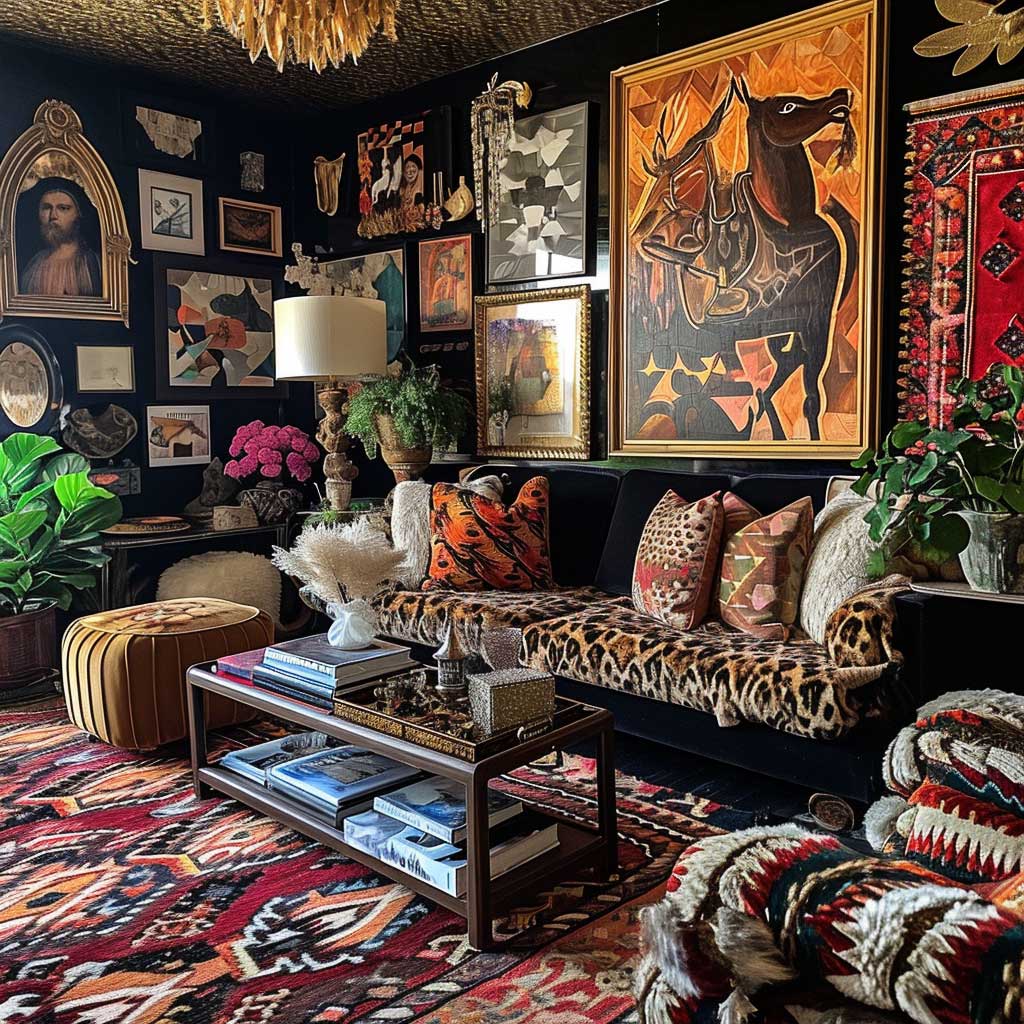
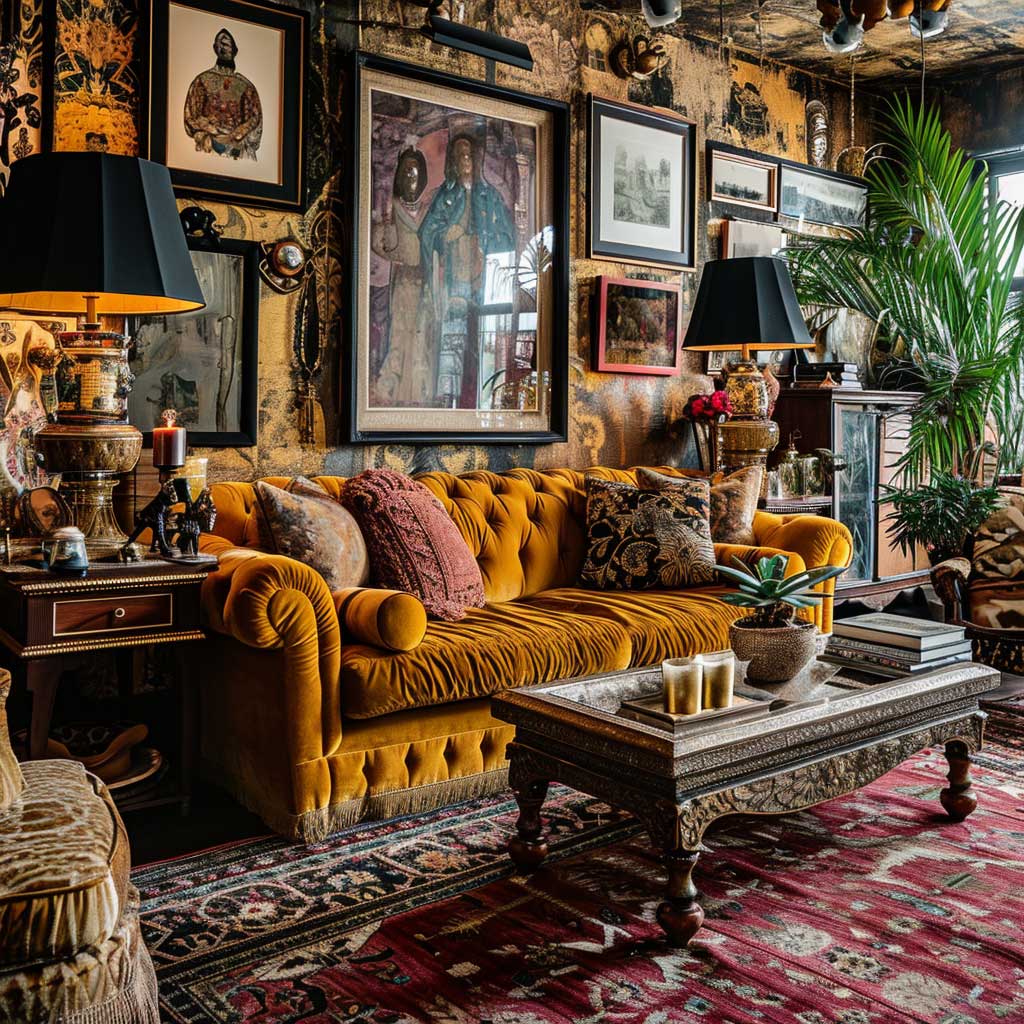
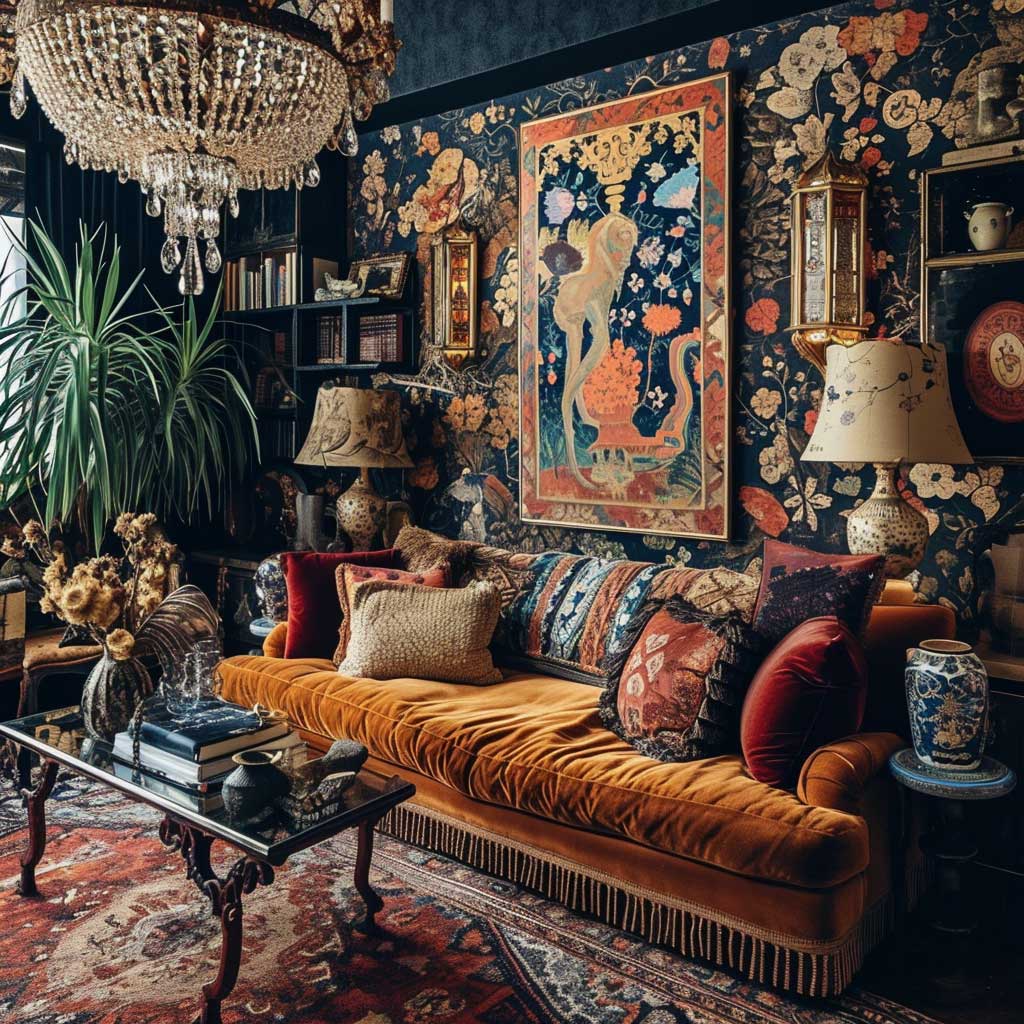
The maximalist living room is a celebration of abundance and self-expression, characterized by its use of rich textures and bold patterns. This design approach transforms living spaces into vibrant tapestries of color and design, creating an environment that is both visually stimulating and deeply personal. By embracing the principles of maximalism, one can craft a living room that is not only a feast for the eyes but also a reflection of individual creativity and flair.
In a maximalist living room, the use of various textures adds depth and interest to the space. Luxurious fabrics like velvet, silk, and brocade can be used in upholstery, cushions, and drapes to create a tactile experience that is as inviting as it is opulent. Textural contrasts are key; smooth silks can be juxtaposed with rougher textiles like burlap or tweed, creating a dynamic interplay that energizes the room.
Bold patterns play a significant role in maximalist decor. Striking wallpapers, large-scale prints on fabrics, and intricate rug designs serve as focal points and set the tone for the room. These patterns don’t have to match; in fact, the beauty of maximalism lies in the harmonious blending of seemingly disparate elements. Floral motifs can coexist with geometric patterns, and traditional designs can be paired with modern prints, all contributing to a rich and eclectic aesthetic.
Color is another crucial component of a maximalist living room. Bold and vibrant hues bring the room to life, whether applied to walls, furniture, or accessories. Maximalist spaces often feature a mix of saturated colors, with jewel tones like emerald, sapphire, and amethyst playing prominent roles. These rich colors create a backdrop for the textures and patterns, uniting various elements into a cohesive whole.
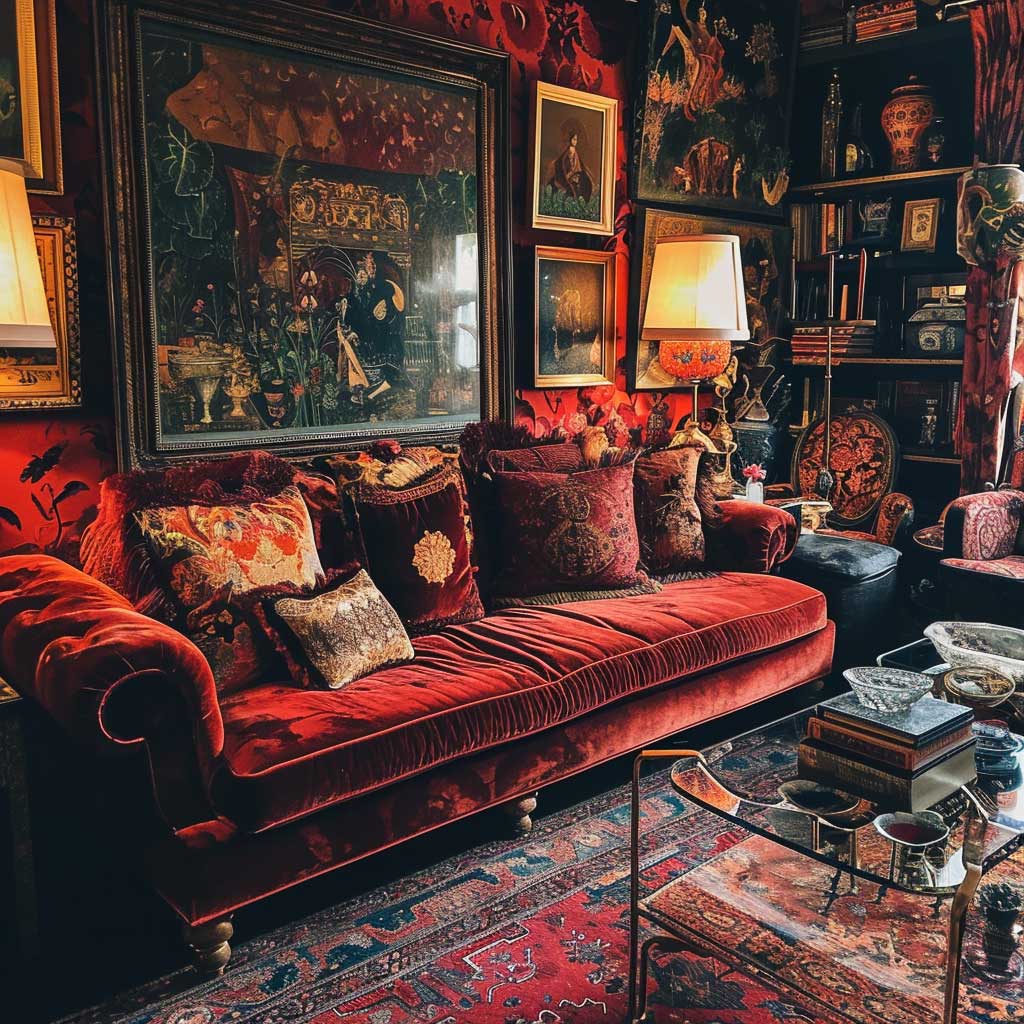
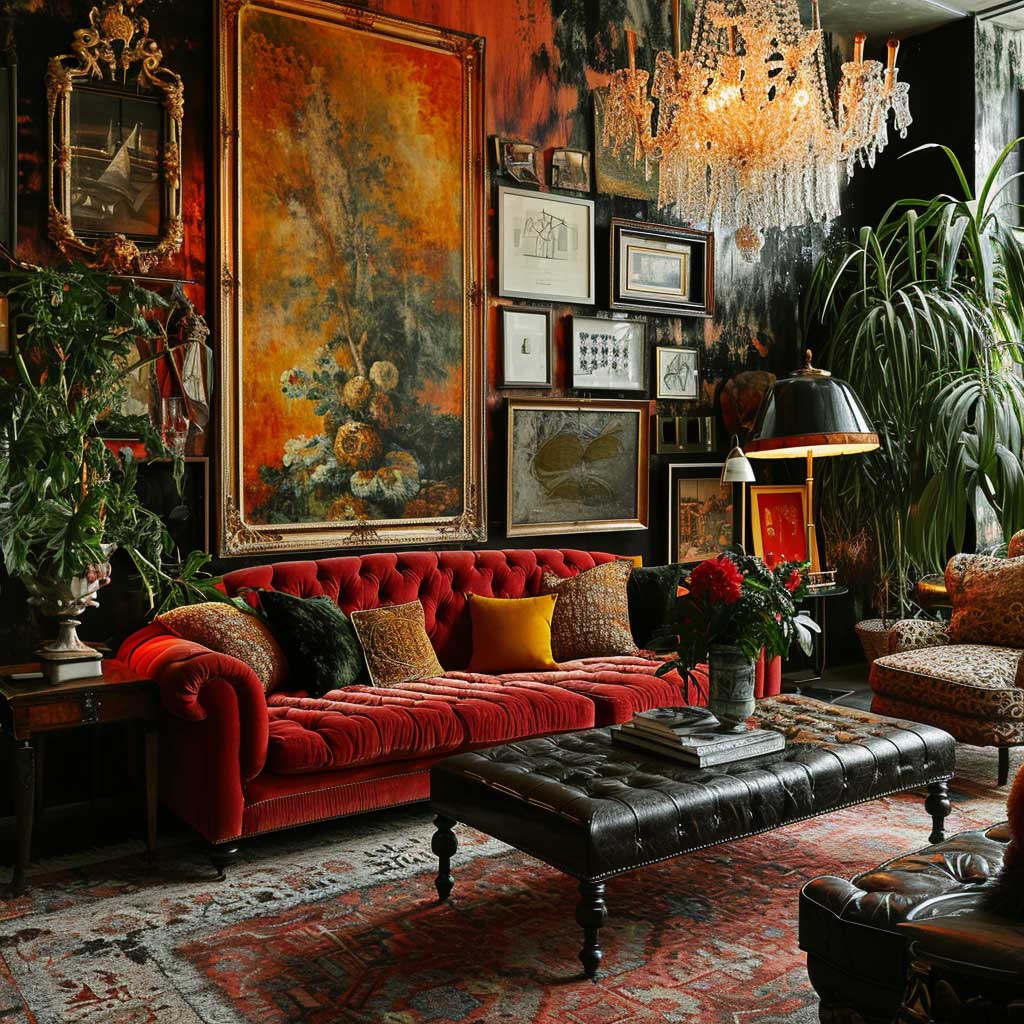

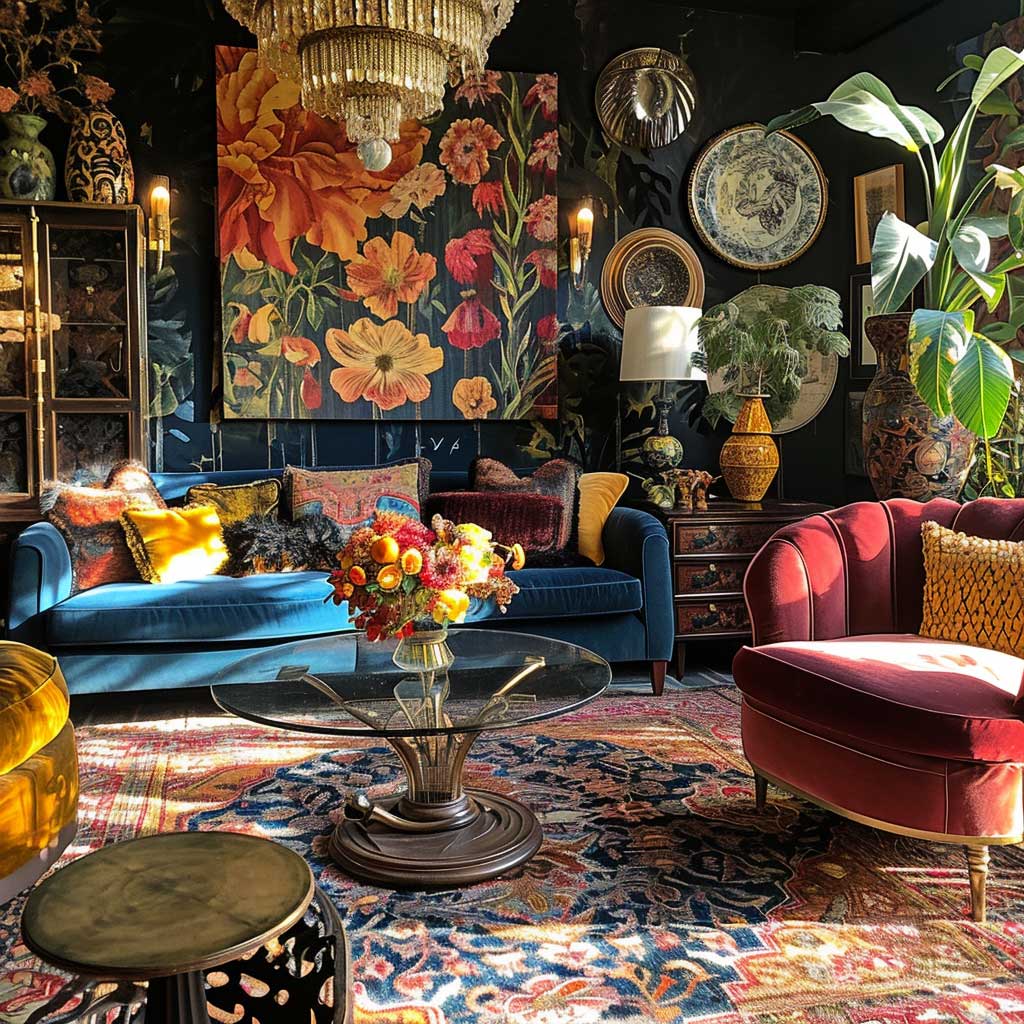
Furnishings in a maximalist living room can be as diverse and eclectic as the other decor elements. A mix of furniture styles, from antique to contemporary, adds to the room’s character. Ornate pieces with intricate details can be balanced with simpler, modern designs, ensuring the space doesn’t feel overly cluttered or chaotic.
Art and decorative accessories are the finishing touches that complete a maximalist living room. Artworks, whether paintings, prints, or sculptures, should be bold and make a statement. Gallery walls with a mix of artworks and photographs add personal history and depth. Decorative objects like vases, sculptures, and collectibles can be displayed liberally, adding layers of interest and personality to the space.
In conclusion, designing a maximalist living room is an exercise in fearless decoration. It’s about embracing richness and diversity in textures, patterns, and colors, creating a space that is deeply personal and visually compelling. While maximalism celebrates abundance, it also requires a thoughtful approach to composition and balance, ensuring that the room remains a harmonious and inviting space.
Eclectic Mix of Antiques in a Maximalist Living Room
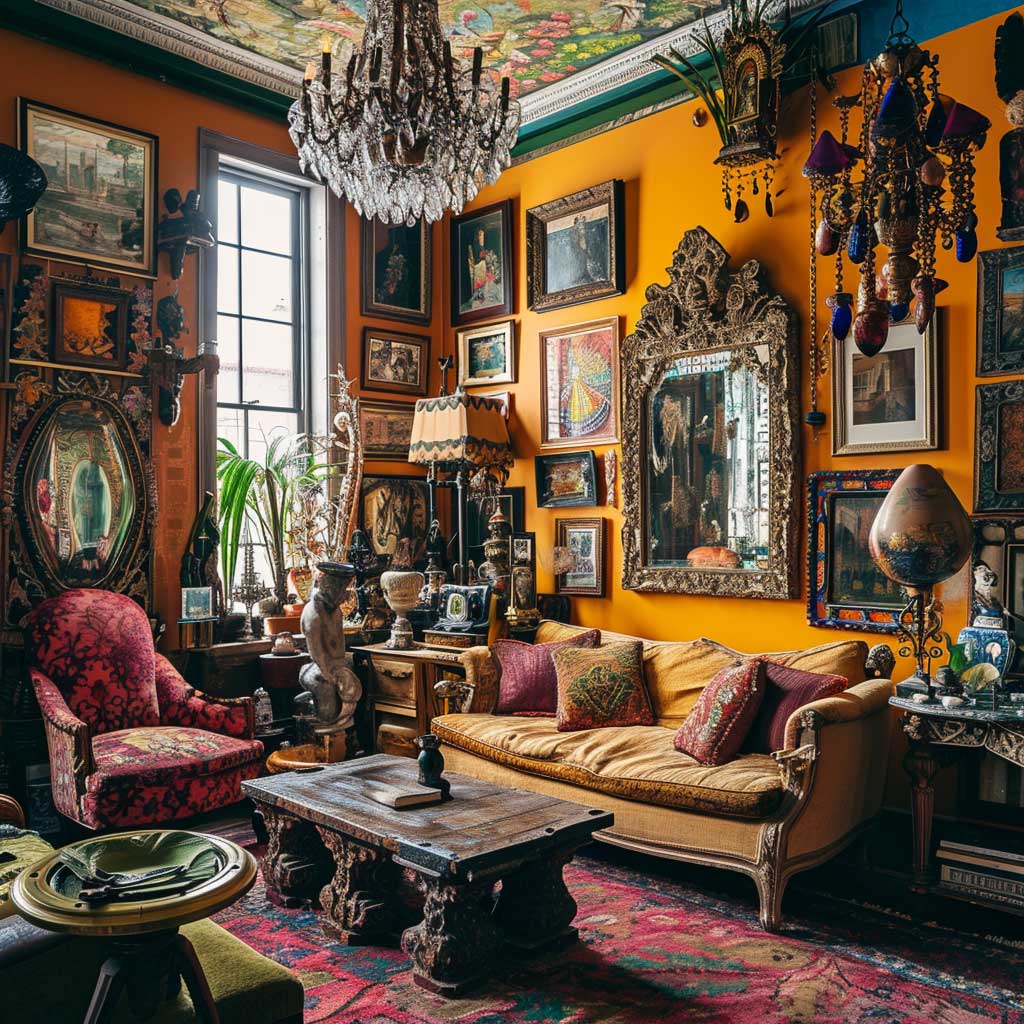
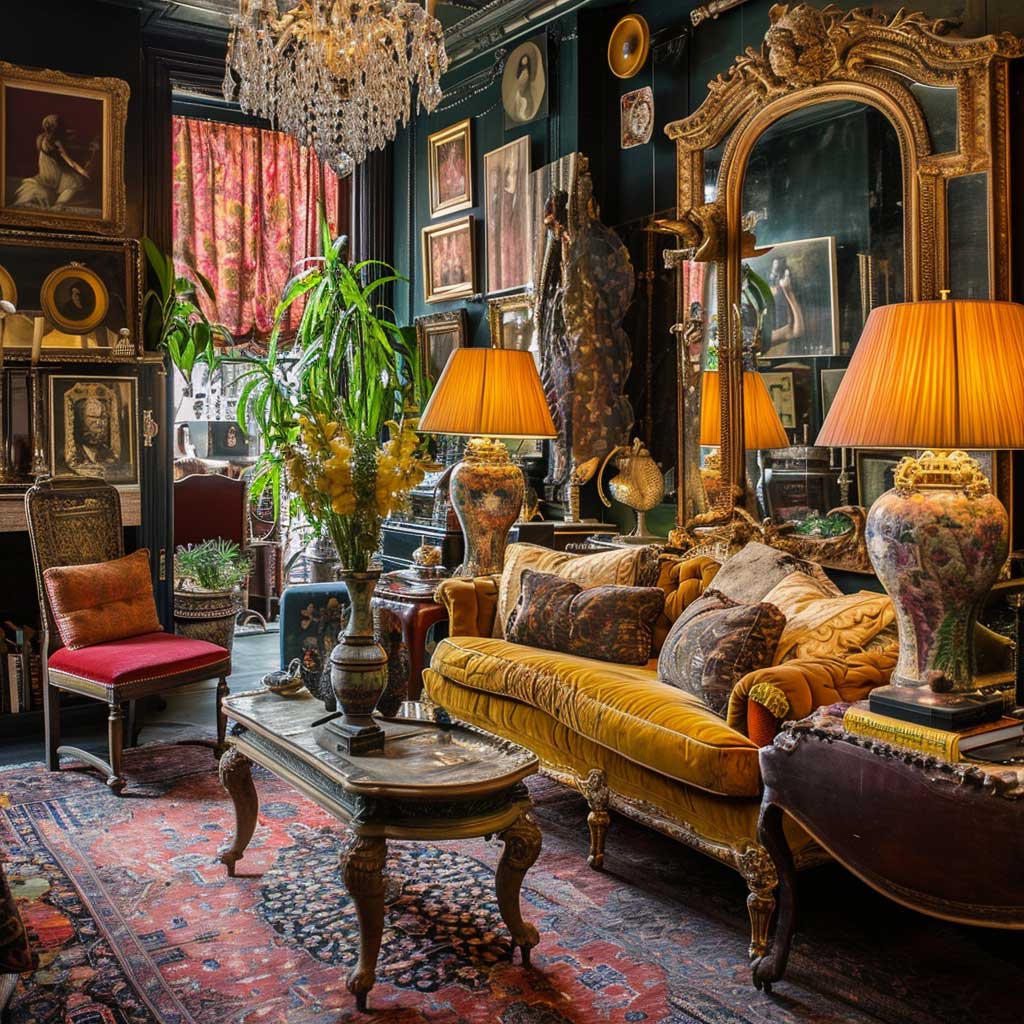
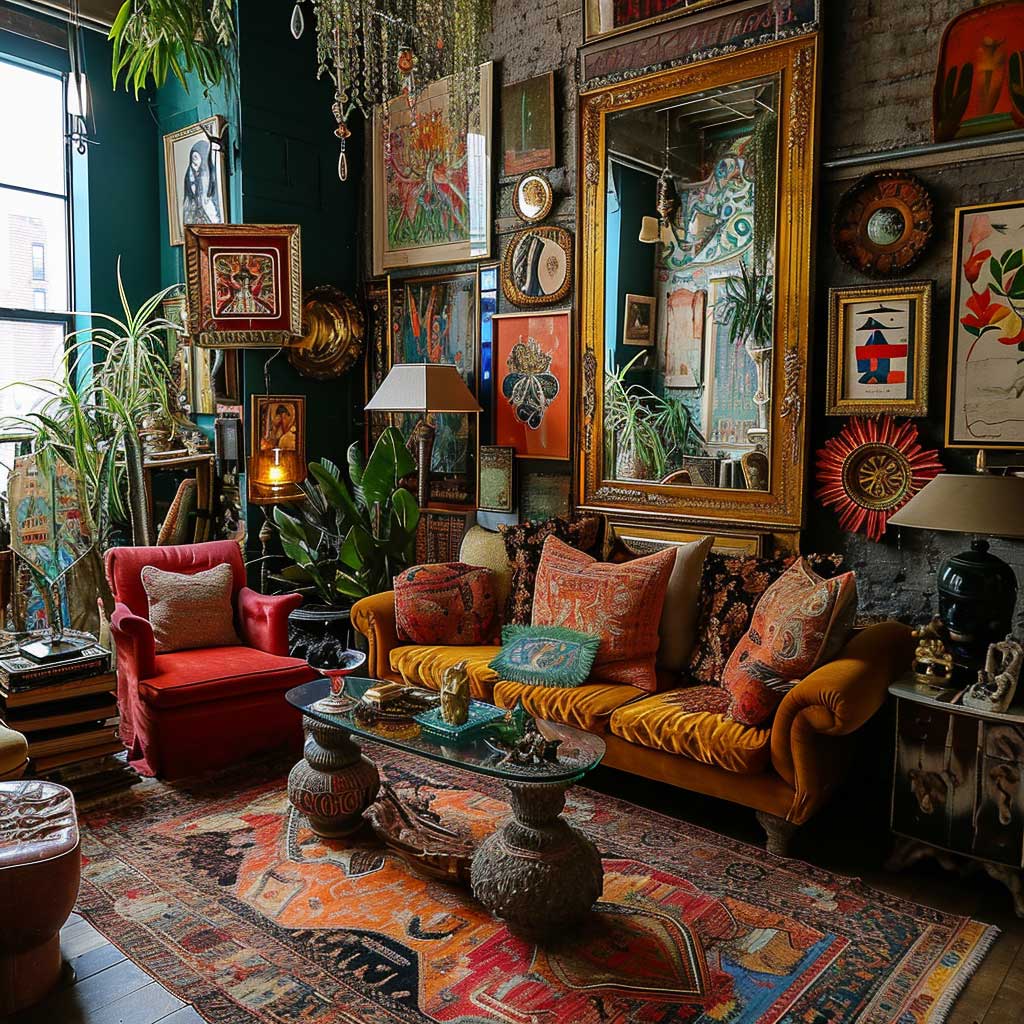
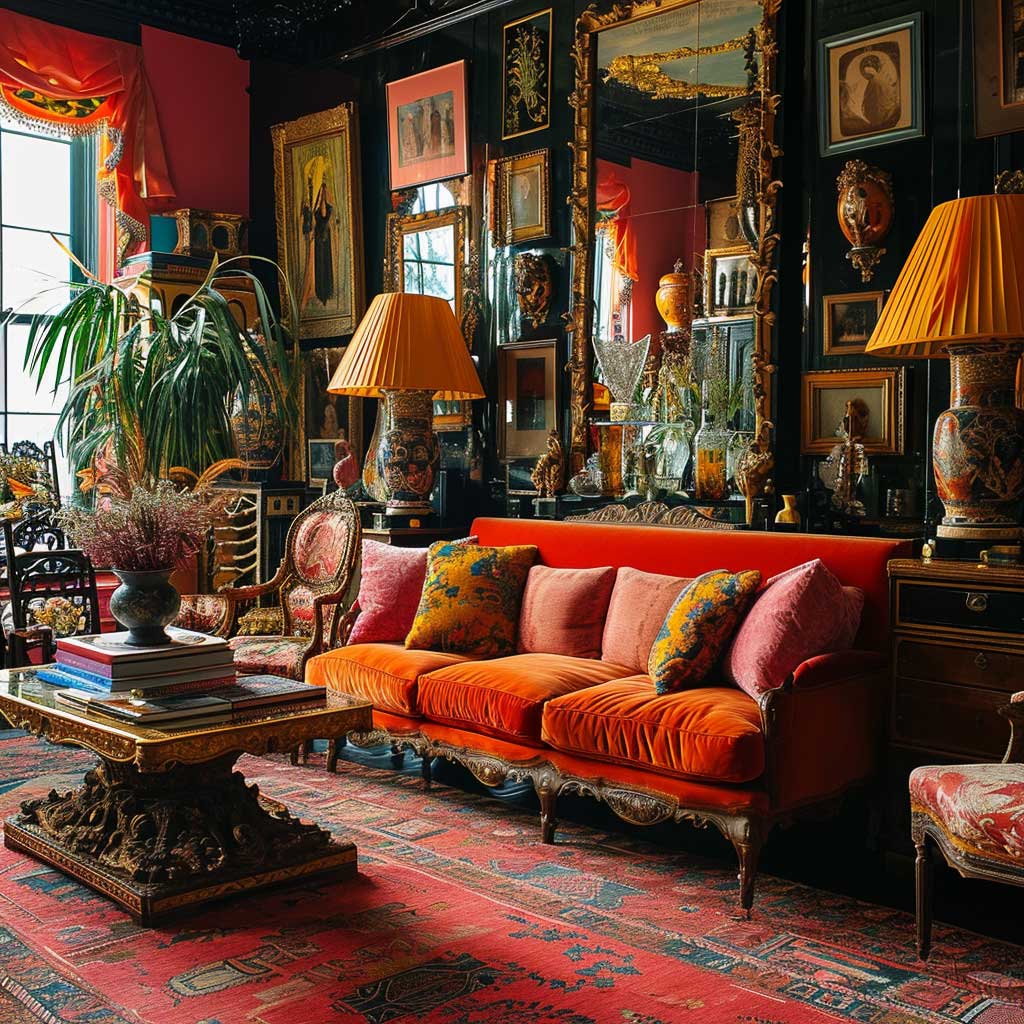
Creating a maximalist living room that showcases an eclectic mix of antiques offers a unique way to infuse personality and historical charm into the space. This design approach revolves around blending various periods and styles, creating a rich tapestry that reflects a deep appreciation for history and artistry. The maximalist ethos, with its emphasis on ‘more is more’, allows for a daring and imaginative use of antiques to craft a living room that is both visually stunning and steeped in character.
Incorporating antiques into a maximalist living room is about more than just furnishing a space; it’s about curating a collection that tells a story. Each antique piece, whether it’s a vintage sofa, an heirloom cabinet, or an ornate mirror, brings with it a sense of history and craftsmanship. The key is to blend these pieces with contemporary elements to create a look that is both timeless and fresh.
Color schemes in a maximalist living room with antiques can be bold and adventurous. Rich hues and deep tones provide a perfect backdrop for showcasing antique pieces. Vibrant wallpapers or paint choices can highlight the intricate details and craftsmanship of the furniture, making them stand out as focal points in the room.
Mixing and matching different styles and periods is fundamental to the maximalist aesthetic. A baroque chandelier can hang in harmony with a mid-century modern chair, and a Victorian-era table can be adorned with contemporary decor. This eclectic mix not only adds visual interest but also creates a layered look that is quintessentially maximalist.

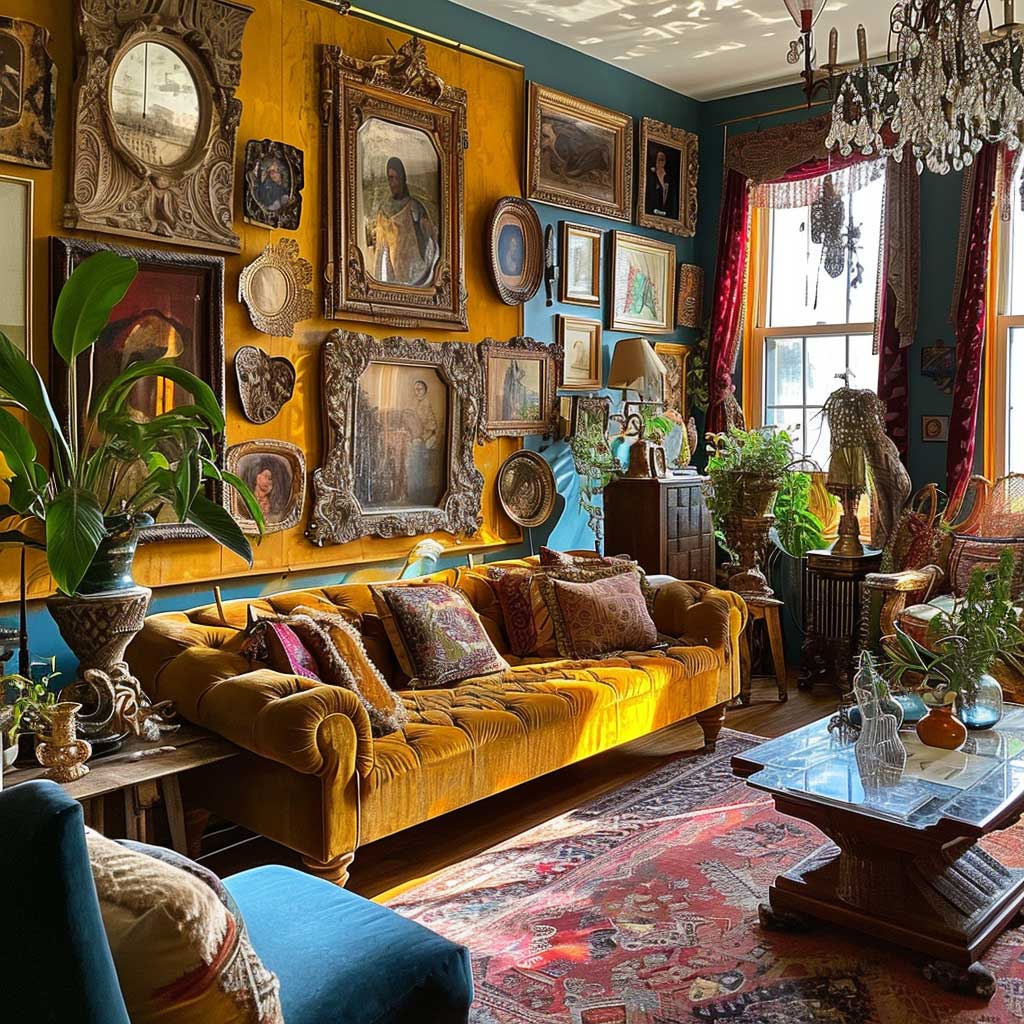
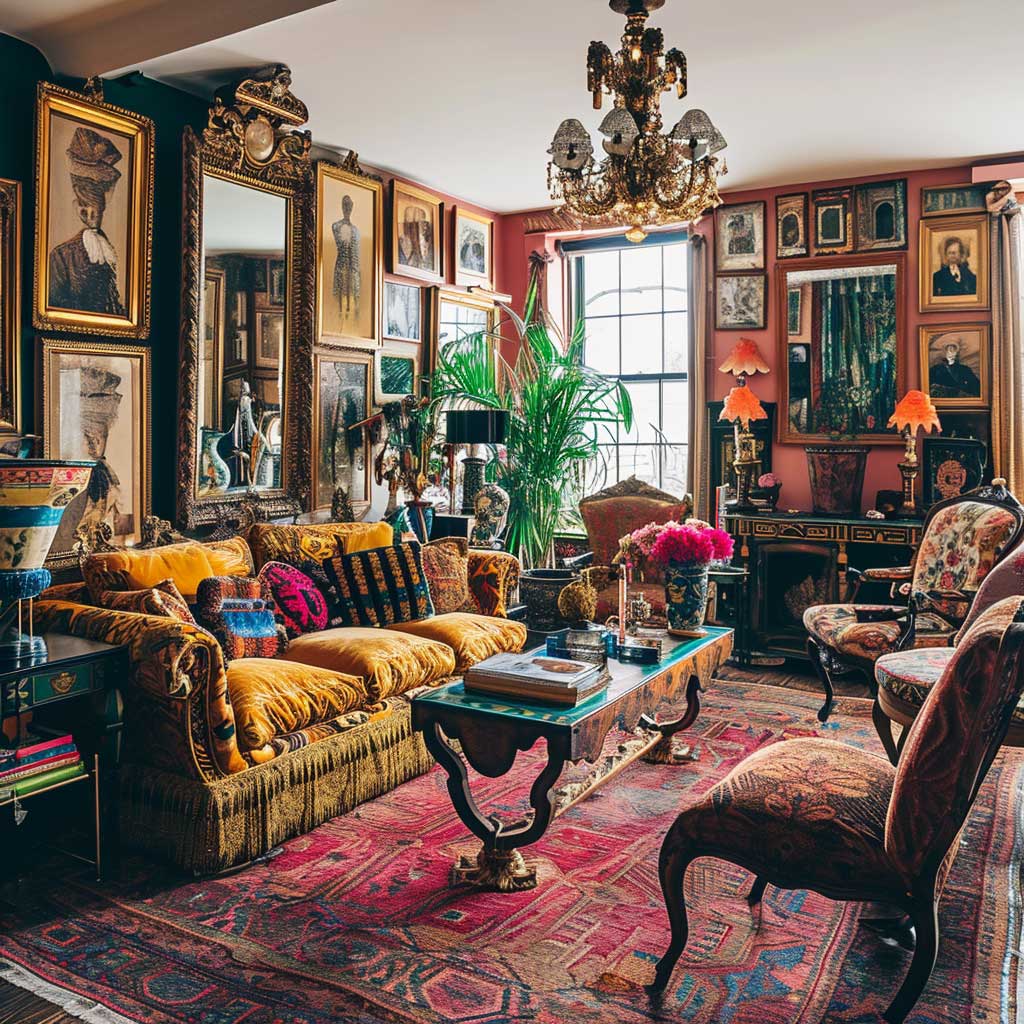
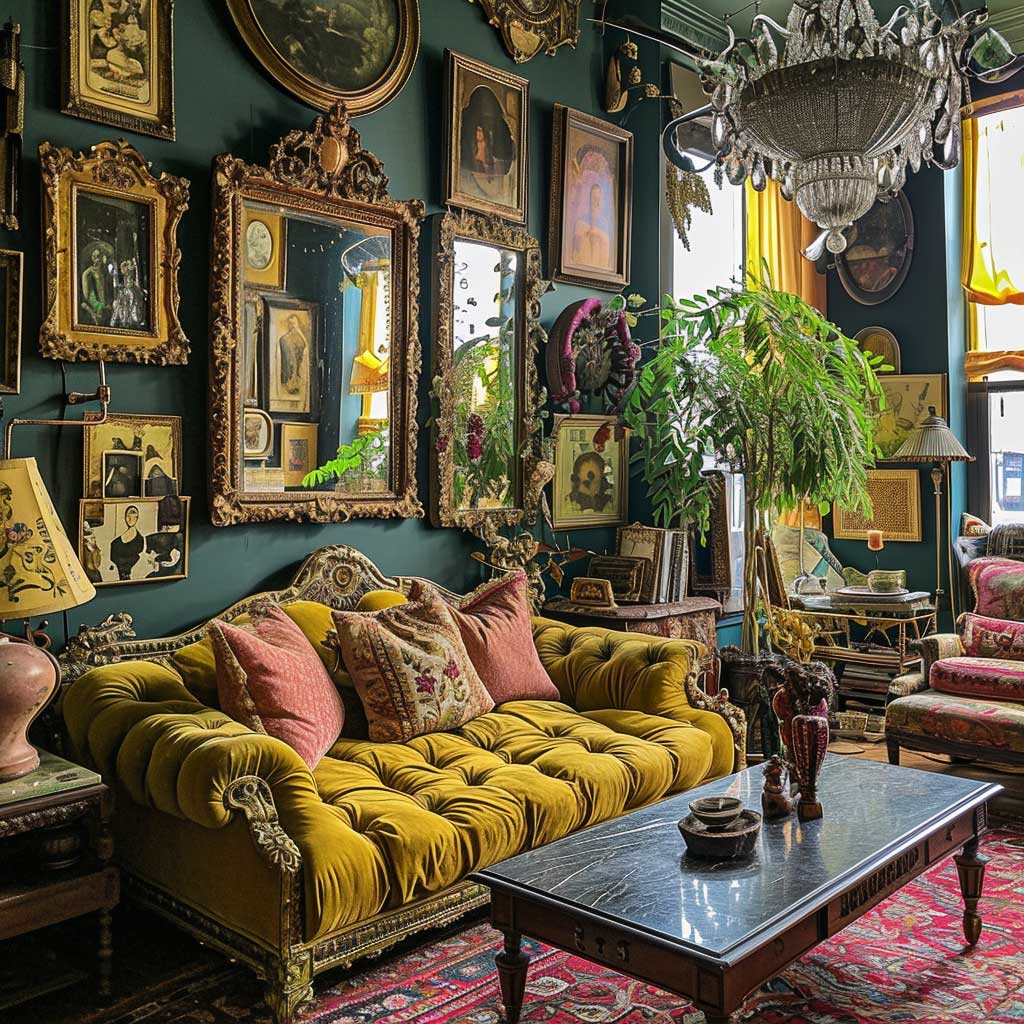
Textures and fabrics in a maximalist living room should complement the antiques. Luxurious materials like velvet, silk, or brocade can be used in upholstery and draperies, adding richness and depth. Patterned textiles, either in the form of rugs, throws, or cushions, can add pops of color and pattern, enhancing the room’s dynamic feel.
Lighting is another element that can elevate the impact of antiques in a maximalist living room. A mix of modern and vintage lighting fixtures can illuminate the space in a way that highlights the beauty of the antique pieces. Table lamps, floor lamps, and sconces in unique designs can serve as additional decorative elements, contributing to the overall ambiance.
Decorative accessories play a crucial role in tying the look together. Artworks, sculptures, and collectibles can be displayed generously around the room. The inclusion of contemporary art or modern decor pieces alongside antiques creates a dialogue between the old and the new, enriching the room’s narrative.
In essence, a maximalist living room with an eclectic mix of antiques is a celebration of diversity in design. It’s a space where the past and present coexist, creating a unique and captivating environment. This approach to interior design not only honors the beauty and history of antique pieces but also showcases a bold and creative spirit in home decor.
Layered Lighting in a Colorful Maximalist Living Room
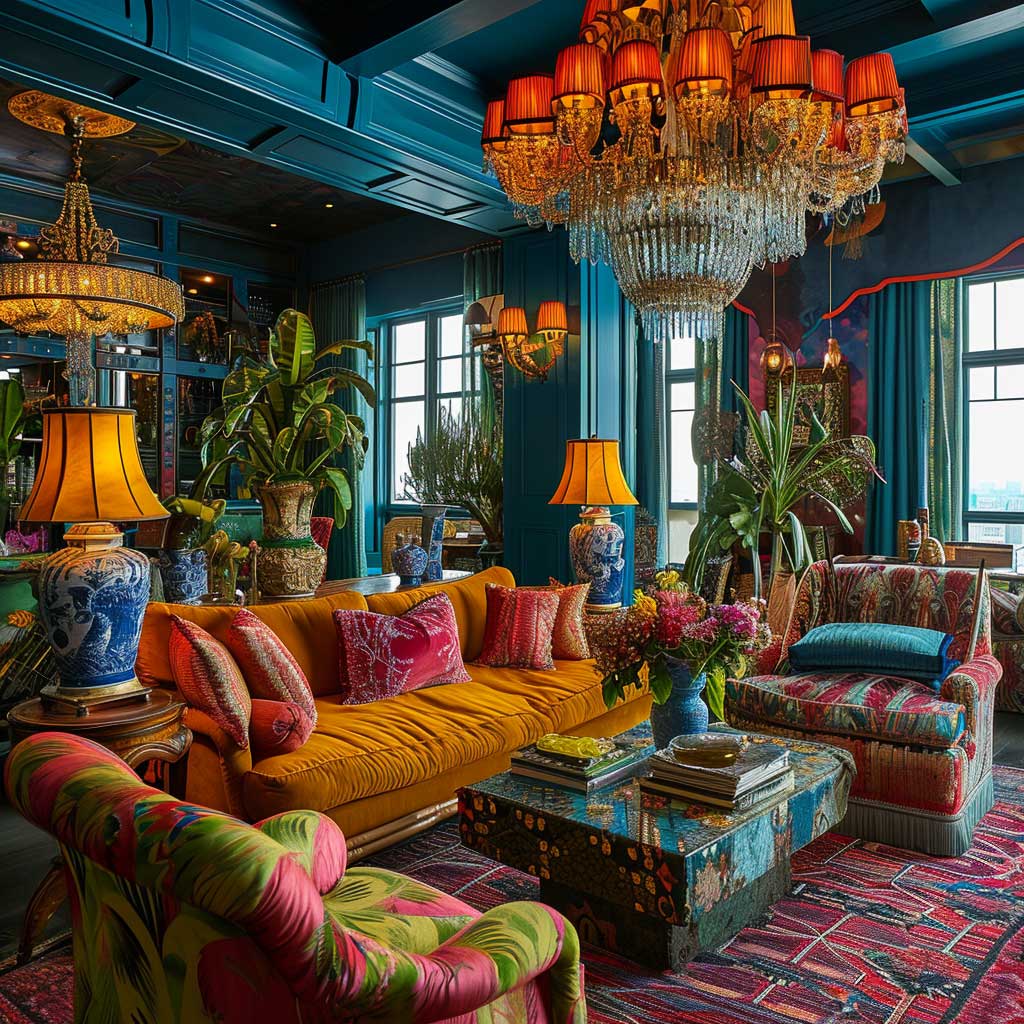
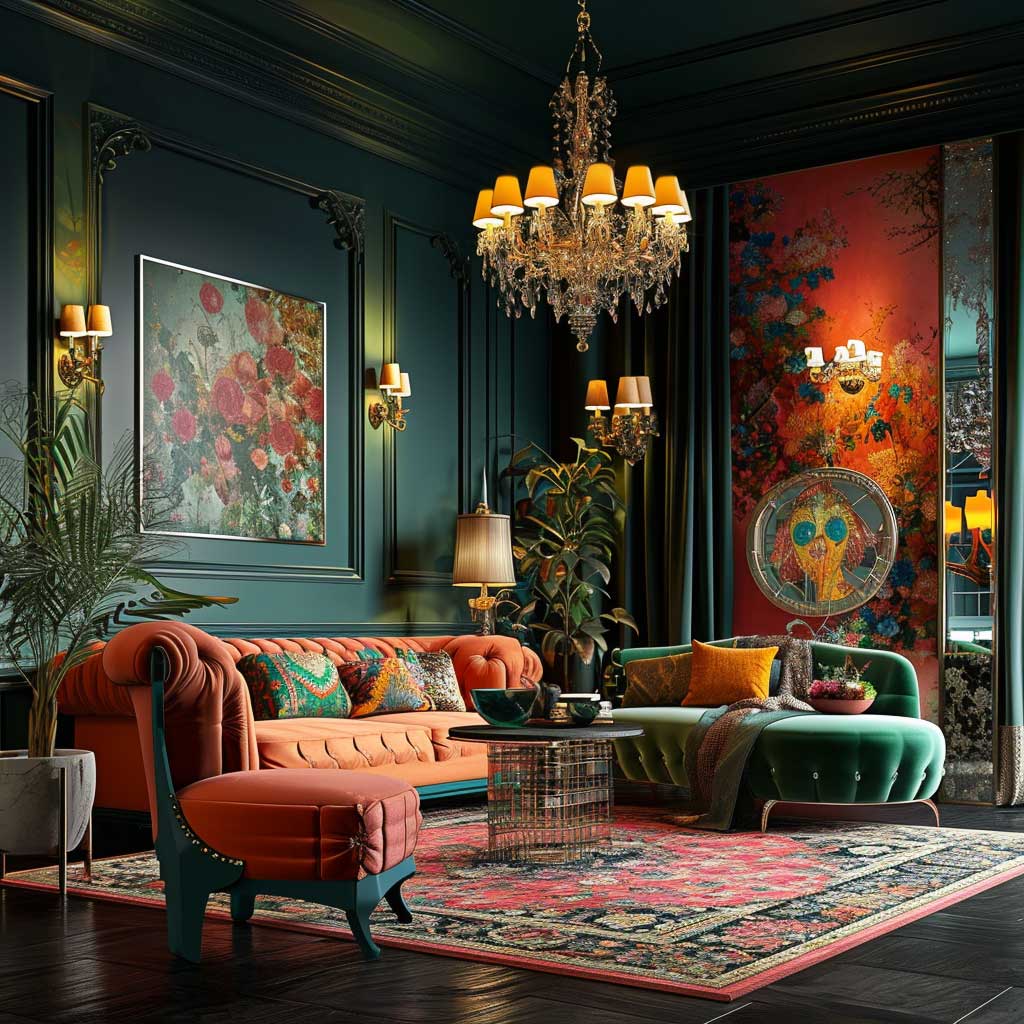
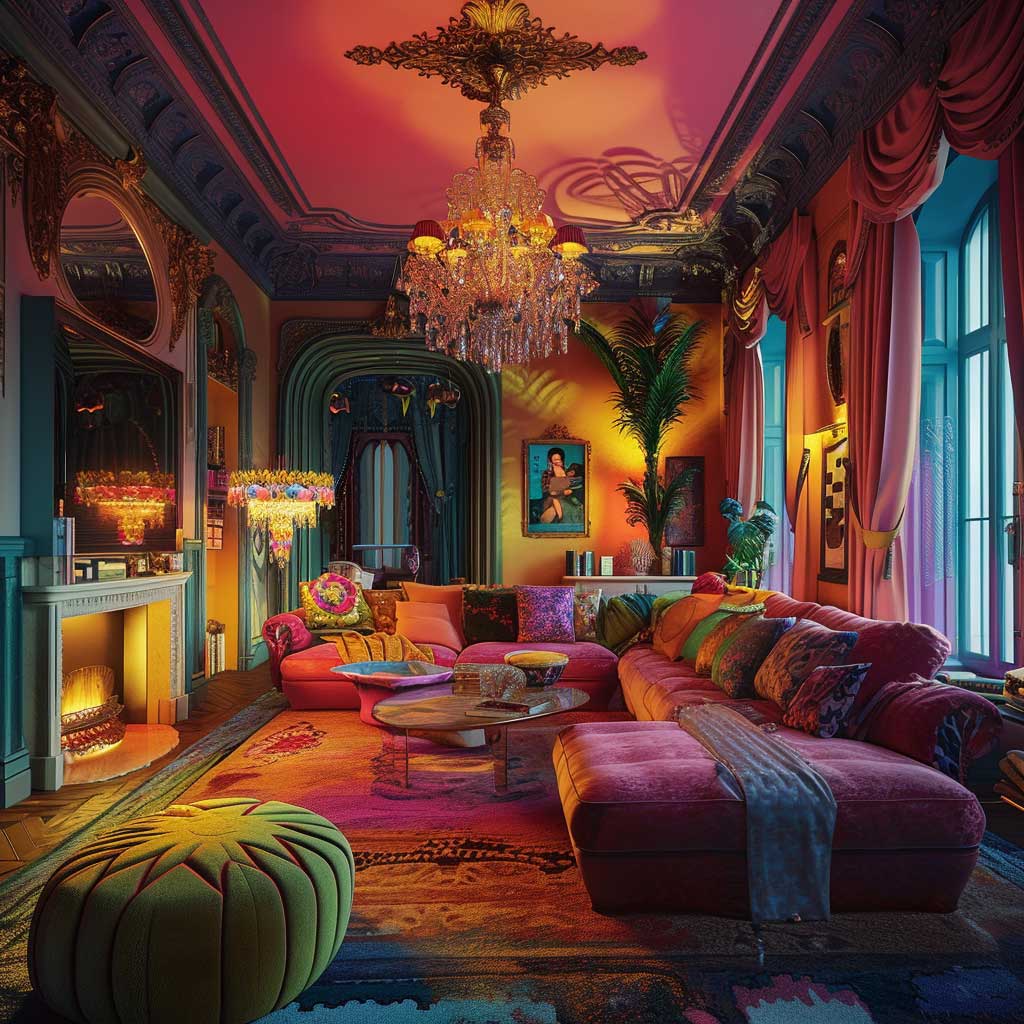
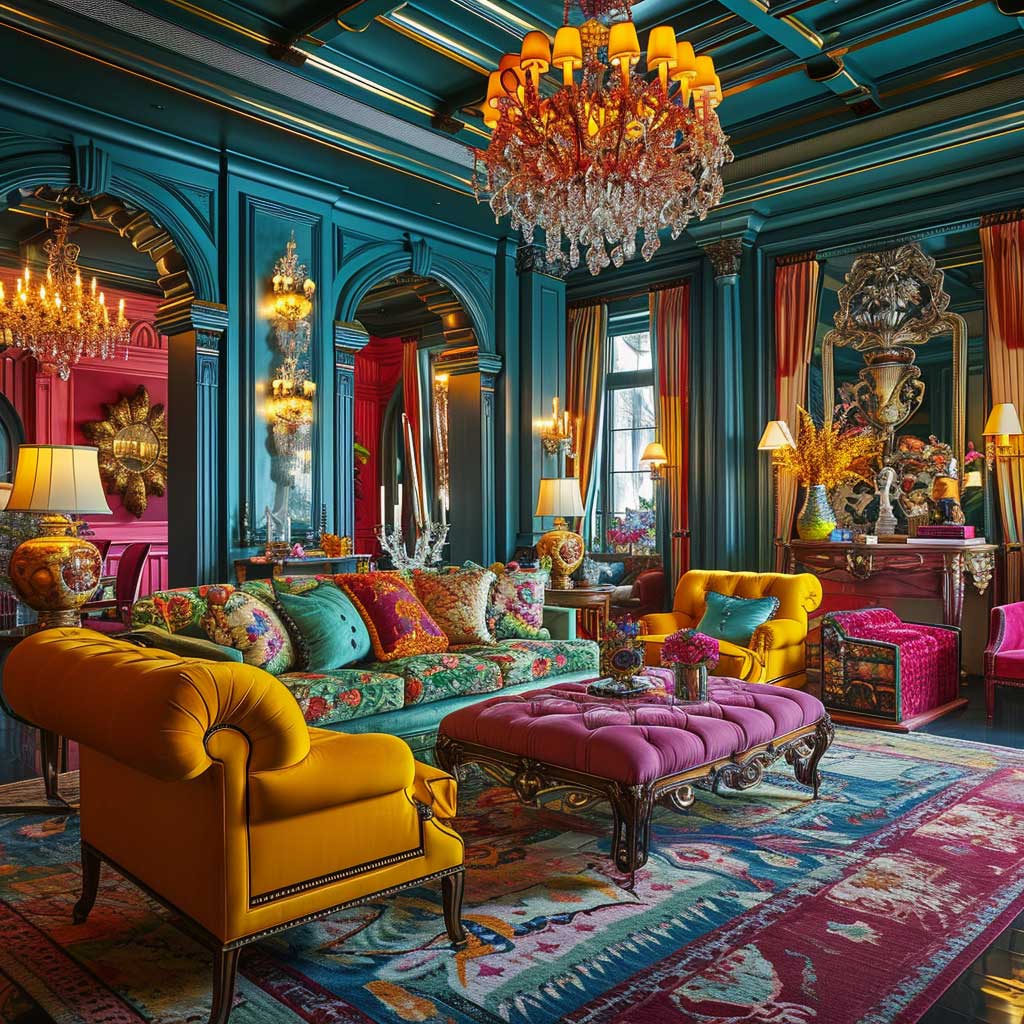
In a maximalist living room, where color and pattern reign supreme, the role of lighting becomes pivotal in enhancing and harmonizing these vibrant elements. Layered lighting in a colorful maximalist space not only illuminates but also accentuates the room’s dynamic character. This approach to lighting creates depth and mood, contributing significantly to the overall impact of the maximalist aesthetic.
Layered lighting involves the strategic placement of multiple light sources at different levels and intensities throughout the living room. The primary layer, typically consisting of ceiling fixtures or chandeliers, provides overall ambient lighting. In a maximalist living room, these fixtures can be statement pieces themselves – ornate chandeliers, bold pendant lights, or colorful ceiling lamps that complement the room’s vibrant decor.
The secondary layer of lighting includes task lights, such as floor lamps beside reading chairs or table lamps on side tables. These lights focus on specific areas, making them functional for activities like reading or working. In a maximalist setting, these lamps can be as decorative as they are practical, featuring vivid colors, unique shapes, or intricate designs that add to the room’s eclectic charm.
Accent lighting forms the third layer, highlighting specific features or artworks in the living room. It could be picture lights illuminating paintings, LED strips under shelves, or spotlights on sculptures. This type of lighting draws attention to the carefully curated objects and artworks, enhancing their visual appeal and reinforcing the maximalist theme.
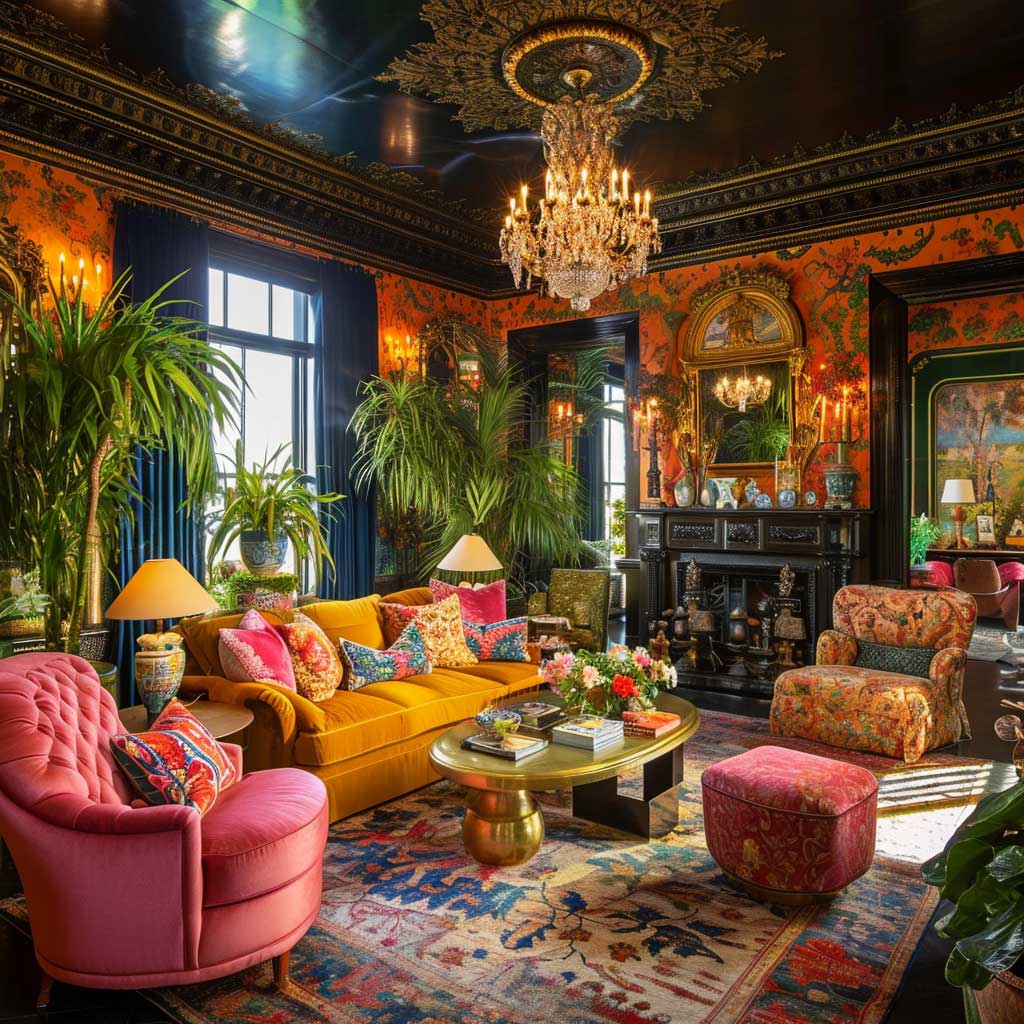
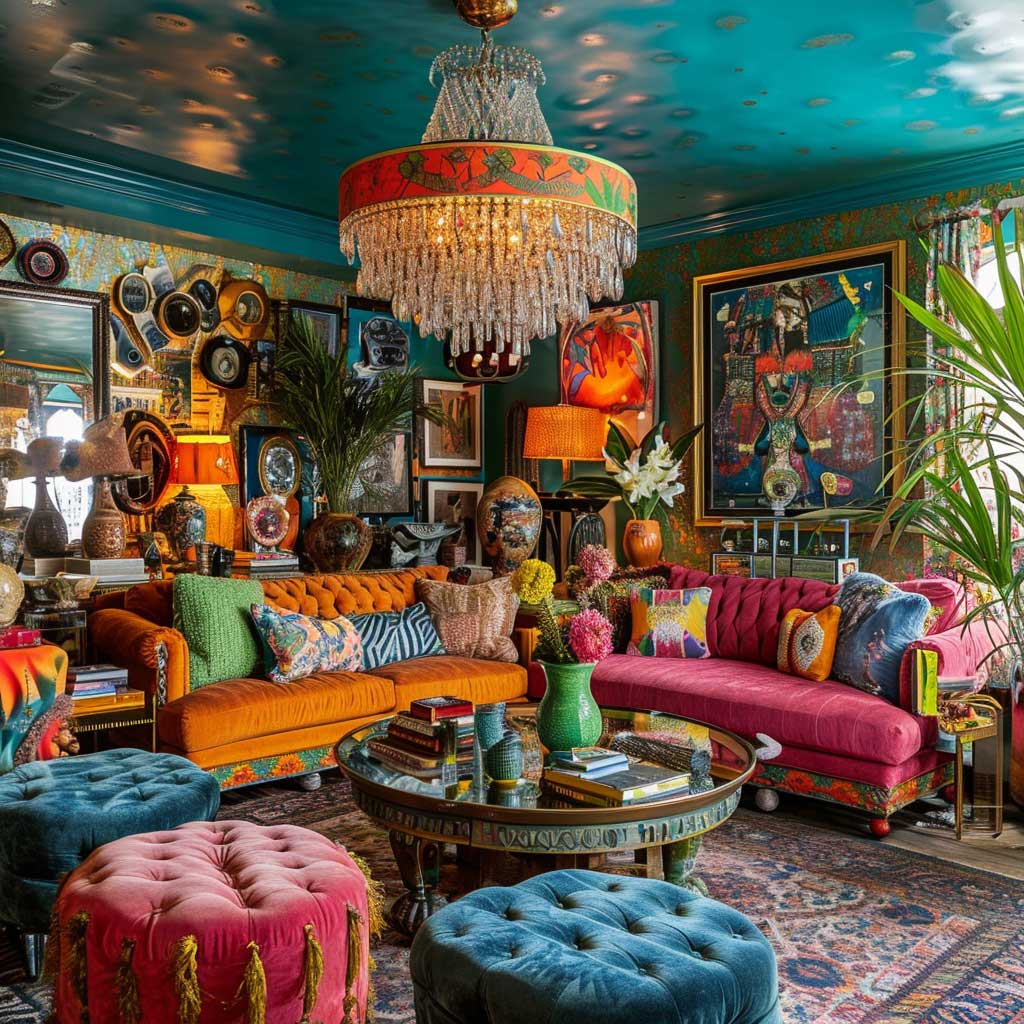
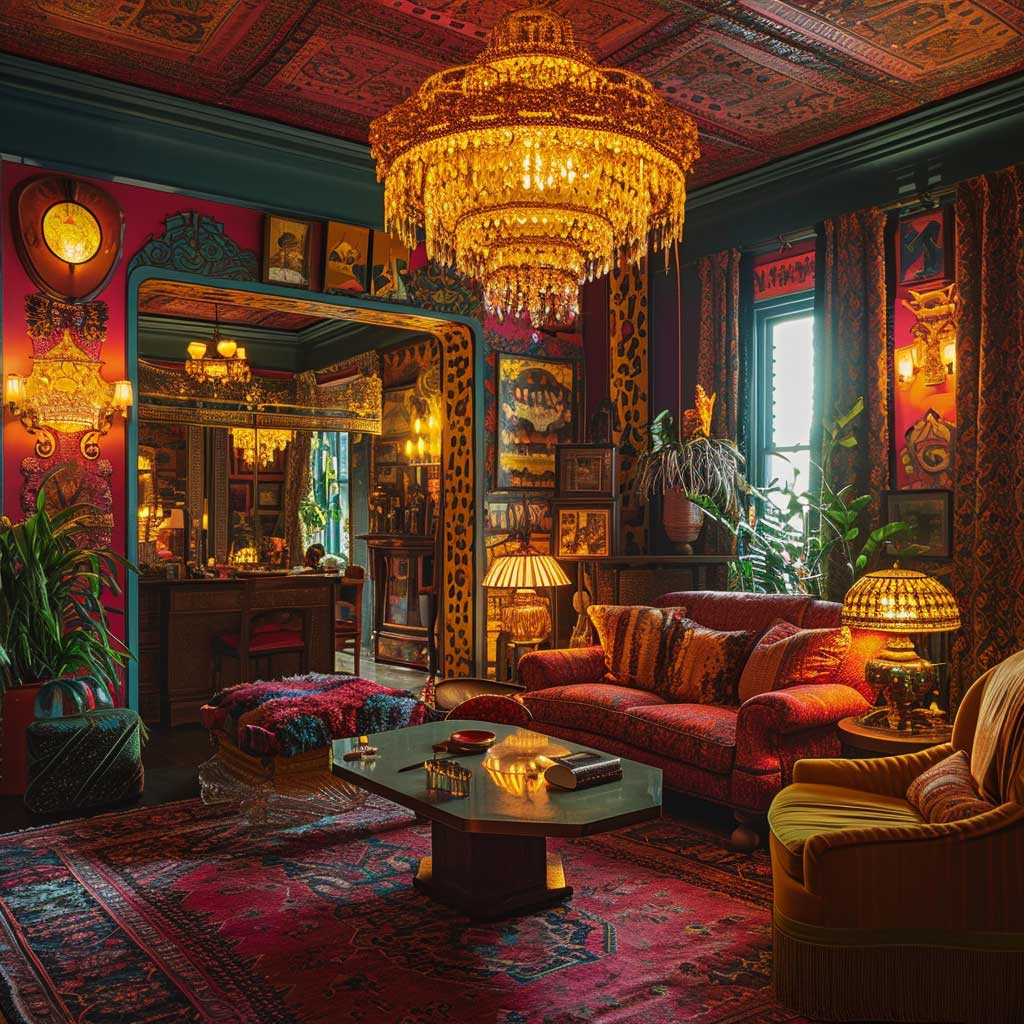
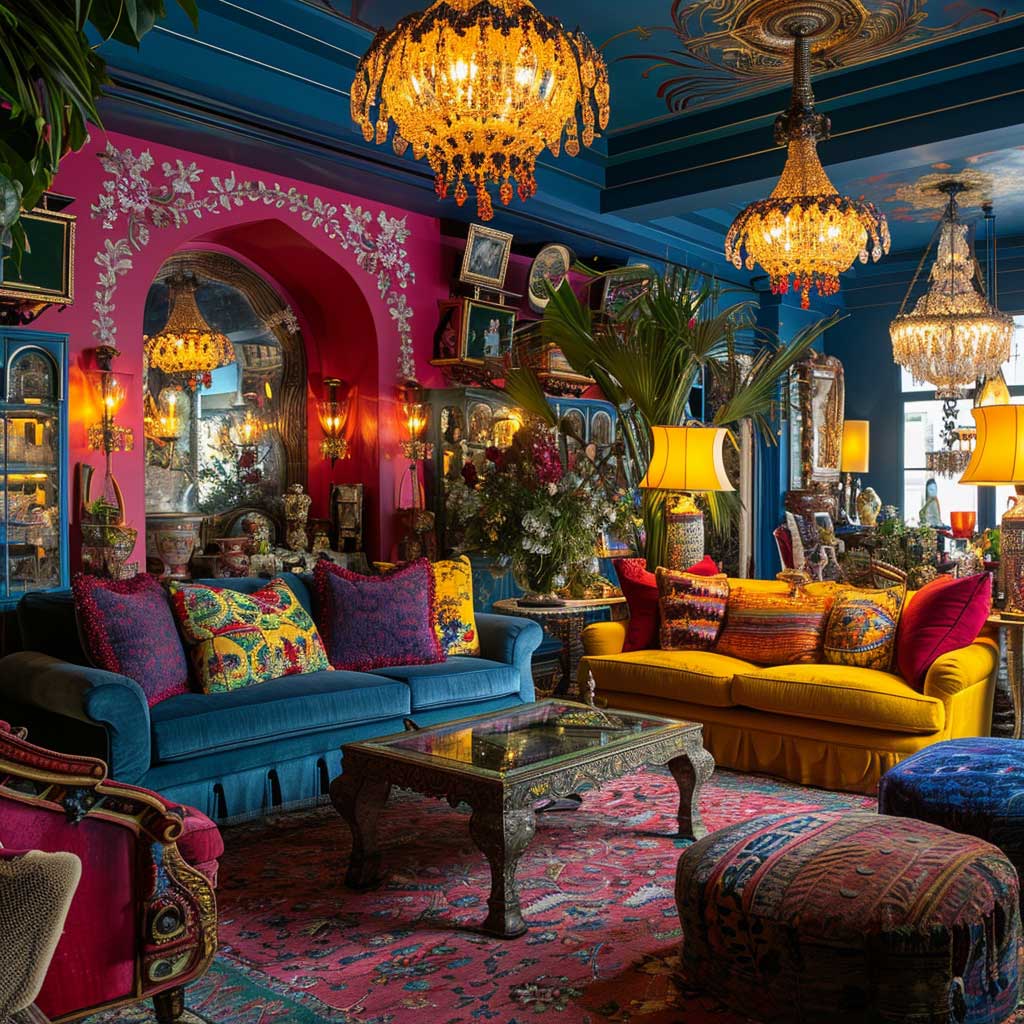
The color temperature of lighting is another crucial aspect. Warmer tones tend to create a cozy and inviting atmosphere, which can balance the high energy of a maximalist room. On the other hand, cooler tones can highlight certain color palettes, making the room feel more vibrant and dynamic. The choice of color temperature can significantly affect the mood and perception of the space.
Dimmer switches play a key role in a maximalist living room, allowing for the adjustment of lighting levels to suit different times of the day or moods. Being able to control the intensity of light ensures that the living room can be bright and lively for entertaining or soft and subdued for relaxing evenings.
Decorative lighting fixtures themselves can be pieces of art in a maximalist living room. Unusual shapes, bold colors, and rich textures in lighting fixtures can contribute to the room’s overall design narrative. These fixtures not only serve their functional purpose but also enhance the room’s aesthetic, acting as focal points and conversation starters.
In conclusion, layered lighting in a colorful maximalist living room plays a multifaceted role. It illuminates, highlights, and contributes to the room’s vibrant decor, enhancing the overall maximalist experience. By carefully selecting and placing various light sources, one can create a living room that is not only visually striking but also adaptable and atmospheric, perfectly capturing the essence of maximalism.
Embracing maximalism in your living room opens up a realm of creative possibilities, allowing you to experiment with bold designs and personal touches. By integrating vibrant colors, eclectic furnishings, and varied textures, you can create a maximalist living room that is not only visually striking but also a true reflection of your personal style and tastes.

